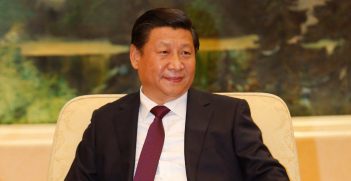Book Review: The Echidna Strategy: Australia’s Search for Power and Peace

Sam Roggeveen takes issue with assumptions concerning the staying power of the United States in East Asia, while also arguing against the view that China is a threat to Australia. He is an advocate for “defensive defence,” urging a return to the “defence of Australia” doctrine rather than proceeding with the AUKUS arrangements.
As far as the US is concerned, Roggeveen’s position is that the US is protected by its geographical distance from Asia (and from Europe for that matter). At some point the US will realise that what happens in East Asia is unlikely to undermine its position in the world in any major way. Australian reliance on the US being fully engaged in East Asia assumes too much. Even if the US remained engaged in a significant way, it is likely to be less important than is the case today.
In relation to China, Roggeveen demonstrates just how difficult it would be for China to invade Australia, or even to mount a lesser form of coercion. Australia’s main strategic asset in this respect is its distance from China. In any event, the most likely scenario for a Chinese threat to Australia is in the context of a US-China conflict when China would negatively view Australia’s military integration with the US.
In line with the “defence of Australia” approach, Roggeveen advocates a focus on Australia’s “near abroad,” including closer relations with Indonesia, and a fuller engagement with Pacific Island countries. In the broader Asia-Pacific context, Australia should support a concert of the major powers based on the US, China, Russia, Japan, India and Indonesia.
The book goes into some detail about what the “defence of Australia” approach would entail militarily. The “echidna strategy” is a recommended approach for Australia, making use of ideas from Taiwan’s porcupine strategy, and the European non-offensive defence strategy. It takes advantage of Australia being distant from any likely threats, with forces designed to protect the Australian homeland and its maritime approaches. Air and naval forces are the focus for the latter aspect, while the army provides additional land-based protection, also playing a role in the Pacific islands, ranging from disaster relief to peacekeeping and stabilisation operations.
It is no surprise that when the author gets to AUKUS he is a strong critic. For Roggeveen, AUKUS is an example of the Australian “cult of the offensive.” In the 1950s and 1960s the term used was “forward defence.” It is better to fight “over there” rather than closer to home, attempting to influence the major ally to advance goals important to Australia. In the case of AUKUS it was Australia that took the initiative. The development of nuclear-powered submarines that can be stationed off the coast of China and attack Chinese targets stands Roggeveen’s argument about taking advantage of Australia’s geographical location on its head. Australia’s submarines would effectively be part of the US submarine fleet in the event of conflict with China. While legally Australia might retain independent control of its submarines, it would be politically inconceivable for Australia in these circumstances to stand aside from the US. Australia would become an asset for the US in a US-China conflict, making an enemy of China without there being any strategic need on Australia’s part to do so. The “echidna strategy” provides an alternative to the AUKUS strategy.
While I agree broadly with Roggeveen’s argument, I think he goes too far in relation to Indonesia and the Pacific islands. On Indonesia, certainly the country is “rising” and becoming a more important power in its own region and beyond. But does that mean Australia should pursue effectively an “alliance” with Indonesia? Possibly in the context of becoming a more important power, Indonesia’s armed forces will shift from the current emphasis on maintaining domestic unity to giving more attention to external defence. It is difficult to envisage circumstances when such a development would constitute a threat to Australia. The “echidna strategy” would still be relevant, although clearly Indonesia is a lot closer to Australia than China is. Australia can have a cooperative relationship with Indonesia without subordinating itself to Indonesian goals, as happened over East Timor, 1974-1999, and currently happens with West Papua.
In relation to the Pacific islands, Roggeveen again (and uncontroversially) recommends developing a cooperative relationship, as now happens. In countering China’s ability to develop such a relationship, Roggeveen thinks Australia, New Zealand, and the Pacific Islands should establish an EU-style Pacific Union. I doubt if the Pacific Island countries would willingly surrender elements of their sovereignty in this way. From an Australian perspective, the failure of the relatively innocuous Voice referendum has shown the difficulties in changing the Australian constitution.
From a broader perspective Roggeveen’s book assumes a rational actor model of politics. However I am not sure that he gives sufficient attention to the reality of politics. While there is merit in his argument that distance is the best protection for Australia (and the US), there is also the fact that these issues are pursued in the context of strategic culture where certain approaches are dominant. Strategic culture becomes embedded in the approach of key political actors. In Australia’s case, allowing for some variations, this explains insecurity in relation to Asia and the emphasis on the US alliance (and Britain historically). To move in Roggeveen’s preferred direction there would need to be political actors taking up the cause. The critics of AUKUS might be attracted to the “echidna strategy” but they are currently in a minority. Apart from domestic politics, an external shock (such as a reduced US presence) might be a significant development leading Australia towards this strategy.
This is a well-argued book. The author writes very elegantly. Even where one disagrees with the argument, or some aspects of it, the structure facilitates engagement. I recommend the book most highly.
This is a review of Sam Roggeveen’s The Echidna Strategy: Australia’s Search for Power and Peace (Collingwood, Vic.: La Trobe University Press in conjunction with Black Inc., 2023). ISBN 9781760643683 (paperback)
Derek McDougall is Professorial Fellow, School of Social and Political Sciences, University of Melbourne.
This article is published under a Creative Commons License and may be republished with attribution.





